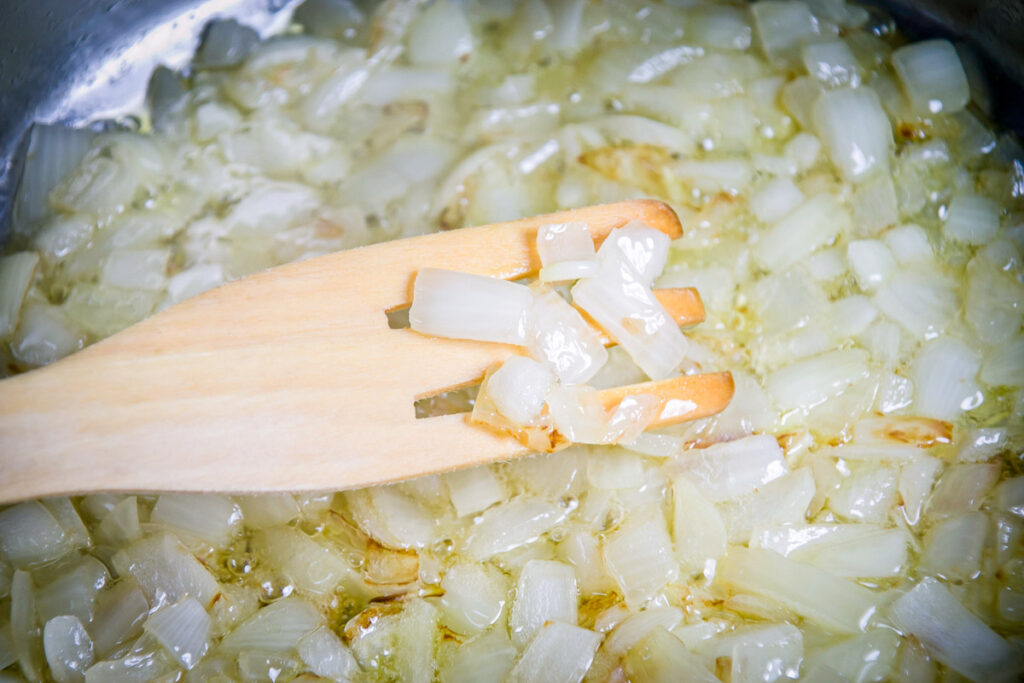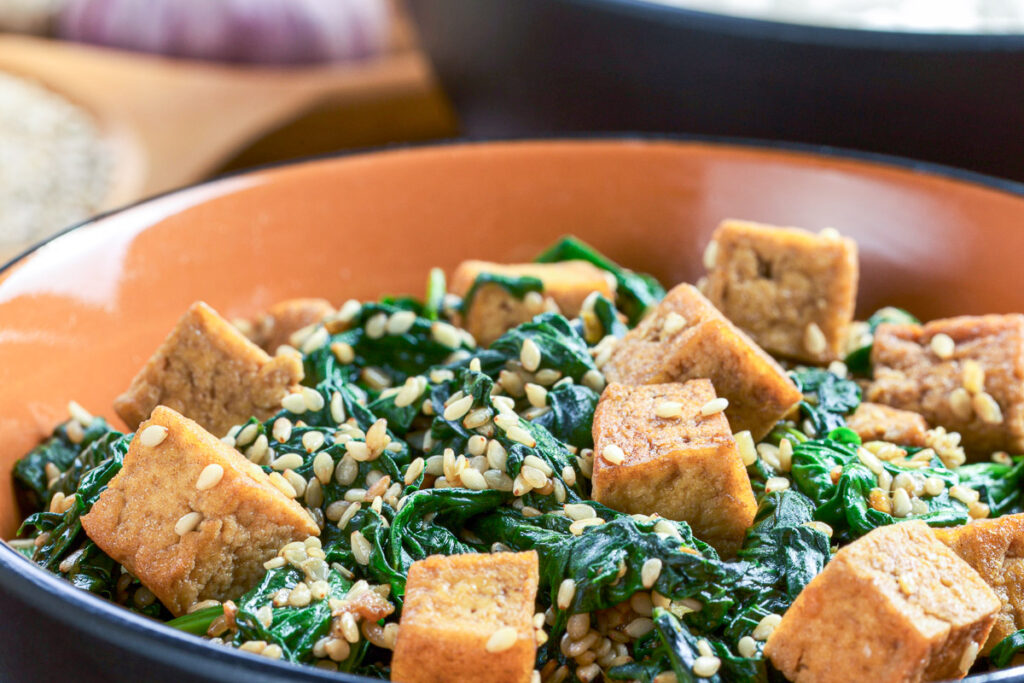Let’s Sauté!
Sautéing is not just a cooking method; it’s an artful dance of flavors and textures. It’s a symphony orchestrated in a hot pan, where ingredients like mushrooms and spinach become the stars of the show.

The origins of sautéing
Emerging from the culinary traditions of France, sautéing has migrated across cultures, adapting and evolving. It’s a technique that celebrates the intrinsic flavors of every ingredient, from the earthy tones of mushrooms to the fresh, vibrant notes of spinach.
The perfect sauté pan
A perfect sauté pan is the cornerstone. It’s where mushrooms brown beautifully, and spinach wilts to perfection. A pan that responds well to heat changes is your best friend in this delicious adventure.
Stainless steel or non-stick?
Stainless steel pans excel at heating evenly, perfect for getting that gorgeous color on mushrooms. Non-stick pans, however, are ideal for spinach, ensuring delicate leaves don’t stick and tear. But if you use non-stick, please pick something that doesn’t have toxic materials (like Teflon) in it.
Preparing ingredients
Preparing ingredients like mushrooms and spinach for sautéing is crucial. Slicing mushrooms uniformly ensures even cooking, while roughly chopping spinach allows it to wilt evenly in the pan. And if you are not in the mood to chop, use baby spinach.

Seasoning
Seasoning is essential to a great sauté. A dash of salt brings out the umami in mushrooms, while a sprinkle of garlic will turn spinach into a fragrant delight.
Picking the perfect oil
For mushrooms, an oil with a higher smoke point like canola allows for a good sear. For spinach, a milder olive oil adds a subtle flavor without overpowering its natural taste.
Understanding the role of heat
Heat control is vital in sautéing. A higher heat is perfect for getting mushrooms to that perfect golden-brown, while spinach requires a gentler, more moderate heat to avoid overcooking.
The steps to a perfect sauté
The dance begins with heating the pan, followed by the oil, waiting for that perfect sizzle. For mushrooms, it’s about waiting for the water to release and evaporate, whereas spinach needs constant stirring for an even wilt.
The toss
Perfecting the toss is essential. For mushrooms, it ensures a uniform sear. For spinach, it’s more about a gentle stir, ensuring all leaves get evenly cooked.
The result of sautéing mushrooms and spinach
Sautéed mushrooms take on an earthy, meaty quality, becoming rich and tender. Spinach, with its quick sauté, remains vibrant, its flavor enhanced yet still fresh.

Meats and seafood
Just like mushrooms and spinach, meats and seafood benefit from the high heat and quick cooking of sautéing, sealing in flavors and juices.
Herbs and spices
Herbs can make or break a dish. For mushrooms, thyme added midway through cooking infuses them with a woodsy flavor. For spinach, a touch of garlic added towards the end keeps its aroma front and center.
Spices and sautéing
Spices are the narrators of a dish’s story. A pinch of nutmeg can brighten sautéed spinach, while a dash of smoked paprika can add depth to sautéed mushrooms.
The sauté sin
Overcrowding the pan when sautéing is a common mistake. Mushrooms in a crowded pan leads to steaming rather than browning. Too much spinach in the pan can result in uneven cooking and a soggy texture.
Heat
Managing heat is a balancing act. For mushrooms, too low heat can make them soggy, while too high a heat can burn spinach quickly.
Sauté ideas
Incorporate global flavors into your sauté. Delight your mushrooms with a splash of soy sauce for an Asian twist, or sprinkle spinach with some feta for a Mediterranean flair.
Vegetarian and vegan twists
Sautéed mushrooms and spinach can be the stars of vegetarian and vegan dishes. They’re versatile and can be paired with all types of grains of grains and legumes for a hearty meal.

The joy of creative sautéing
Sautéing is about adding your personal touch, be it with a unique spice blend for your mushrooms or a special technique for your spinach.
Sautéing is an art form that allows ingredients like mushrooms and spinach to shine. It’s a technique that encourages experimentation and creativity, inviting chefs of all levels to visualize the myriad possibilities within a single pan. So, grab your ingredients, and let the sautéing adventure begin!
Editor: Oliver Baysinger.
Photo Credits – Deposit Photos and contributors.
Elizabeth (Beth) Mueller is a food journalist, CEO of Pear Tree Kitchen, and co-creator of Food Blogger Help. She also has a bachelor’s degree in philosophy and a registered nurse licensed in the State of Oklahoma. When she has free time between writing, blogging, and cooking, she can be found volunteering as an RN with the Oklahoma Medical Reserve Corps.

